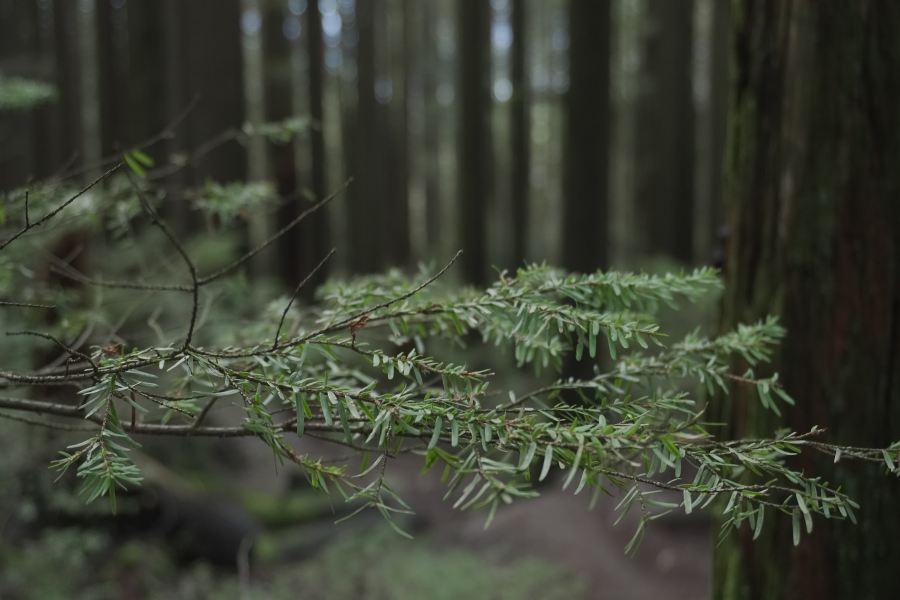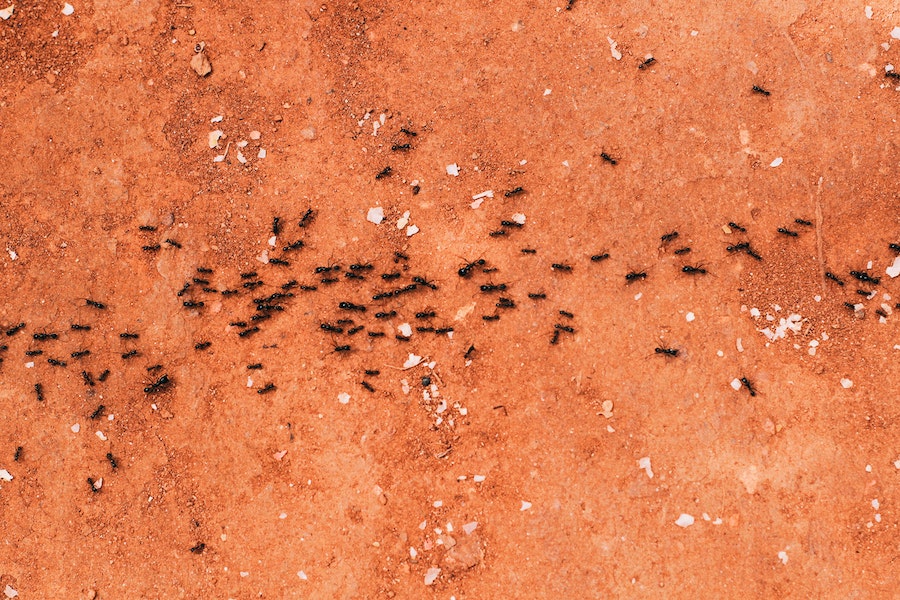Poison hemlock (Conium maculatum) is a highly toxic and invasive plant species that poses significant risks to both human health and the environment. Often mistaken for harmless look-alike plants, it is crucial to identify and eradicate poison hemlock promptly and safely. This comprehensive guide aims to provide readers with essential knowledge on how to recognize, remove, and prevent poison hemlock infestations effectively. By understanding the potential dangers and adopting proper disposal methods, individuals can play an active role in safeguarding their communities and preserving native ecosystems from this hazardous invader.
How To Get Rid Of Poison Hemlock?
Getting rid of poison hemlock requires careful and systematic approaches to ensure both personal safety and successful eradication. Follow these steps to remove poison hemlock effectively:
- Identification: Learn to distinguish poison hemlock from similar plants. Look for its characteristic purple-spotted stems, fern-like leaves, and white, umbrella-shaped flower clusters.
- Safety Measures: Wear appropriate personal protective equipment (PPE) when handling poison hemlock, including gloves, long-sleeved clothing, and eye protection. Avoid contact with bare skin and keep children and pets away from the plant.
- Mechanical Control: For small infestations, hand-pull or dig out the plants, making sure to remove the entire root system. Do this in early spring or late fall when the soil is moist and roots are easier to extract.
- Mowing and Cutting: For larger infestations, mow or cut down the poison hemlock before it produces seeds. Repeat cutting throughout the growing season to weaken the plant.
- Chemical Control: If mechanical methods are not sufficient, consider using herbicides. Choose herbicides specifically formulated for poison hemlock, and follow the instructions on the label carefully. Apply the herbicide when the plant is actively growing.
- Integrated Pest Management (IPM): Combine multiple control methods to create a comprehensive strategy for managing poison hemlock. This approach increases the effectiveness of eradication efforts and reduces the need for herbicides.
- Disposal: Bag and seal the removed poison hemlock plants in heavy-duty plastic bags. Dispose of them in the trash or according to local regulations. Do not compost poison hemlock, as its seeds may still be viable.
- Prevention: Prevent the spread of poison hemlock by monitoring and removing new plants promptly. Encourage native plant growth in your area to outcompete invasive species.
- Seek Professional Help: If you are unsure about handling poison hemlock or dealing with large infestations, consider seeking assistance from local conservation organizations or professional pest control services.
Identifying Poison Hemlock
Identifying poison hemlock (Conium maculatum) is crucial to distinguish it from other plants and prevent accidental exposure to its toxic properties. Poison hemlock is a biennial or perennial herb that can grow up to 6 feet tall. Its stem is smooth, hairless, and typically hollow with distinctive purple blotches or streaks. The leaves of poison hemlock are dark green, glossy, and finely divided, resembling parsley or fern leaves. They have a distinct foul smell when crushed. Poison hemlock produces clusters of small, white flowers arranged in umbrella-shaped clusters known as “umbels,” which bloom from late spring to early summer.
One of the key distinguishing features of poison hemlock is its similarity to other plants from the Apiaceae family, such as wild carrot (Queen Anne’s lace) and fennel. However, poison hemlock has several distinguishing characteristics that set it apart. Unlike wild carrots, poison hemlock has hairless stems and leaves and lacks the small, dark-red flower in the center of the umbel. Fennel has similar leaves to poison hemlock but lacks the characteristic purple blotches on the stem.
Geographic distribution and common habitats can also help identify poison hemlock. It is commonly found in temperate regions throughout North America, Europe, and Asia. It thrives in moist, fertile soils and is often found along roadsides, riverbanks, pastures, ditches, and other disturbed areas.
Given the dangers associated with poison hemlock, it is crucial to correctly identify the plant to avoid accidental ingestion or contact. If you suspect the presence of poison hemlock, consult local authorities, conservation organizations, or botanical experts for proper identification and guidance on eradication measures.
Health Risks And Safety Precautions
Health Risks of Poison Hemlock: Poison hemlock is one of the most toxic plants found in the wild, containing several potent alkaloids, including coniine, gamma-conceive, and conhydriine. These toxic compounds affect the nervous system and can lead to severe poisoning in humans and animals. Ingesting even small amounts of the plant can be fatal. Common health risks associated with poison hemlock exposure include:
- Toxicity: Poison hemlock is extremely poisonous, and ingestion can lead to symptoms ranging from mild gastrointestinal upset to severe neurological effects and death.
- Skin Irritation: Contact with the plant’s sap or crushed leaves can cause skin irritation and allergic reactions in sensitive individuals.
- Respiratory Problems: Inhaling the plant’s airborne pollen or dust particles during cutting or mowing can lead to respiratory issues, especially in people with pre-existing respiratory conditions.
- Poisoning in Livestock: Livestock, such as cattle, horses, and sheep, are susceptible to poisoning from grazing on poison hemlock-infested pastures.
Safety Precautions When Handling Poison Hemlock
Always wear appropriate PPE when dealing with poison hemlock, including gloves, long-sleeved clothing, pants, and eye protection. This prevents skin contact and minimizes the risk of exposure.
Under no circumstances should any part of poison hemlock be ingested. Keep it away from children, pets, and livestock.
After handling poison hemlock or working in areas where it grows, thoroughly wash your hands and any exposed skin with soap and water.
When mowing or cutting poison hemlock, wear a mask or respirator to prevent inhalation of pollen or dust particles. Be vigilant in identifying poison hemlock early to prevent its spread and avoid contact with mature plants.
If you choose to remove poison hemlock, exercise extreme care to avoid damaging the plant and releasing toxic sap. Dispose of the plant safely and properly. For large infestations or when unsure about proper handling, seek assistance from professionals or local authorities experienced in dealing with toxic plants.
Environmental Impact Of Poison Hemlock
The presence of poison hemlock (Conium maculatum) can have significant negative impacts on the environment and native ecosystems. As an invasive species, poison hemlock outcompetes and displaces native plants, disrupts ecological balance, and poses threats to wildlife. The environmental impacts of poison hemlock include:
- Biodiversity Loss: Poison hemlock’s rapid growth and aggressive nature allow it to form dense stands, choking out native vegetation. This reduces biodiversity by crowding out native plant species that provide habitat and food sources for various wildlife.
- Soil Erosion: Poison hemlock often grows in disturbed areas, such as roadsides and riverbanks, where it can exacerbate soil erosion. Its dense growth prevents the establishment of deep-rooted, stabilizing vegetation, leading to increased soil loss and sediment runoff into water bodies.
- Habitat Degradation: By displacing native plants, poison hemlock alters the structure and composition of ecosystems, leading to the degradation of natural habitats. This can have cascading effects on wildlife that rely on specific plant communities for shelter and foraging.
- Wildlife Toxicity: The toxic compounds present in poison hemlock can affect wildlife that inadvertently consume the plant. Grazing animals, such as livestock, may be at risk of poisoning when feeding on infested pastures.
- Water Contamination: Poison hemlock can grow near water bodies, and its runoff can introduce toxic compounds into aquatic environments, posing risks to aquatic life and water quality.
- Cultural Impact: In some cases, poison hemlock infestations can impact recreational activities and cultural landscapes. Infested areas may become unsuitable for hiking, camping, and other outdoor activities, affecting local communities and tourism.
- Economic Costs: The management and control of poison hemlock infestations can impose economic burdens on local communities and conservation organizations. Funds and resources are diverted from other conservation efforts to combat this invasive plant.
Natural And Biological Control Measures
Natural and biological control measures can complement traditional removal methods in managing poison hemlock (Conium maculatum) infestations. These methods involve using natural enemies and competitors to limit the growth and spread of the invasive plant. Implementing these measures can reduce the reliance on chemical control and contribute to more sustainable and environmentally friendly management strategies. Some natural and biological control measures include:
- Biological Control Agents: Introduce specific herbivorous insects that feed on poison hemlock to reduce their vigor. Some insects, such as the European black-margined aphid (Aphis craccivora), have shown potential in controlling poison hemlock populations. Utilize naturally occurring plant pathogens, such as fungi or bacteria, that are specific to poison hemlock to weaken or kill the plants.
- Livestock Grazing: Controlled grazing by certain livestock, such as goats, sheep, or cattle, can help control poison hemlock in pastures and rangelands. These animals consume the plant, reducing its abundance and preventing seed production. However, caution should be exercised, as livestock may be at risk of poisoning if they ingest large amounts of poison hemlock. Proper monitoring and management are essential to ensure their safety.
- Native Plant Competition: Encourage the growth of native vegetation in areas infested with poison hemlock. Native plants can outcompete poison hemlock for resources, reducing its growth and spread.
Final Words
In conclusion, effectively getting rid of poison hemlock requires a comprehensive and safety-conscious approach. Identify the plant accurately, prioritize personal safety with proper protective gear, and utilize mechanical, chemical, and biological control methods where appropriate. By actively participating in eradication efforts, we can safeguard both ourselves and our environment from the harmful impacts of this invasive and toxic plant.
FAQ’s
Is Poison Hemlock Poisonous To Humans And Animals?
Yes, poison hemlock is highly toxic to both humans and animals. Ingesting even small amounts of the plant can lead to severe poisoning, which can be fatal.
How Can I Distinguish Poison Hemlock From Other Similar Plants?
Poison hemlock has purple-spotted stems, fern-like leaves, and white, umbrella-shaped flower clusters. It can be differentiated from similar plants like wild carrot by its hairless stems and leaves, and absence of a minor, dark-red flower in the center of the umbel.
Can I Remove Poison Hemlock Manually, And Is It Safe To Do So?
Yes, you can remove poison hemlock manually. Wear proper protective clothing, gloves, and eye protection to avoid direct contact. Small infestations can be hand-pulled, while larger ones may require tools like a weed wrench.
Are There Natural Ways To Control Poison Hemlock?
Natural control measures include introducing herbivorous insects or pathogens that target poison hemlock, controlling grazing by certain livestock, promoting native plant competition, and enhancing soil conditions to favor native plants.
Can I Compost Poison Hemlock After Removal?
No, it is not recommended to compost poison hemlock. The seeds can remain viable after composting, leading to potential spread if the compost is used in other areas. Instead, seal the removed plants in plastic bags and dispose of them safely in the trash.








